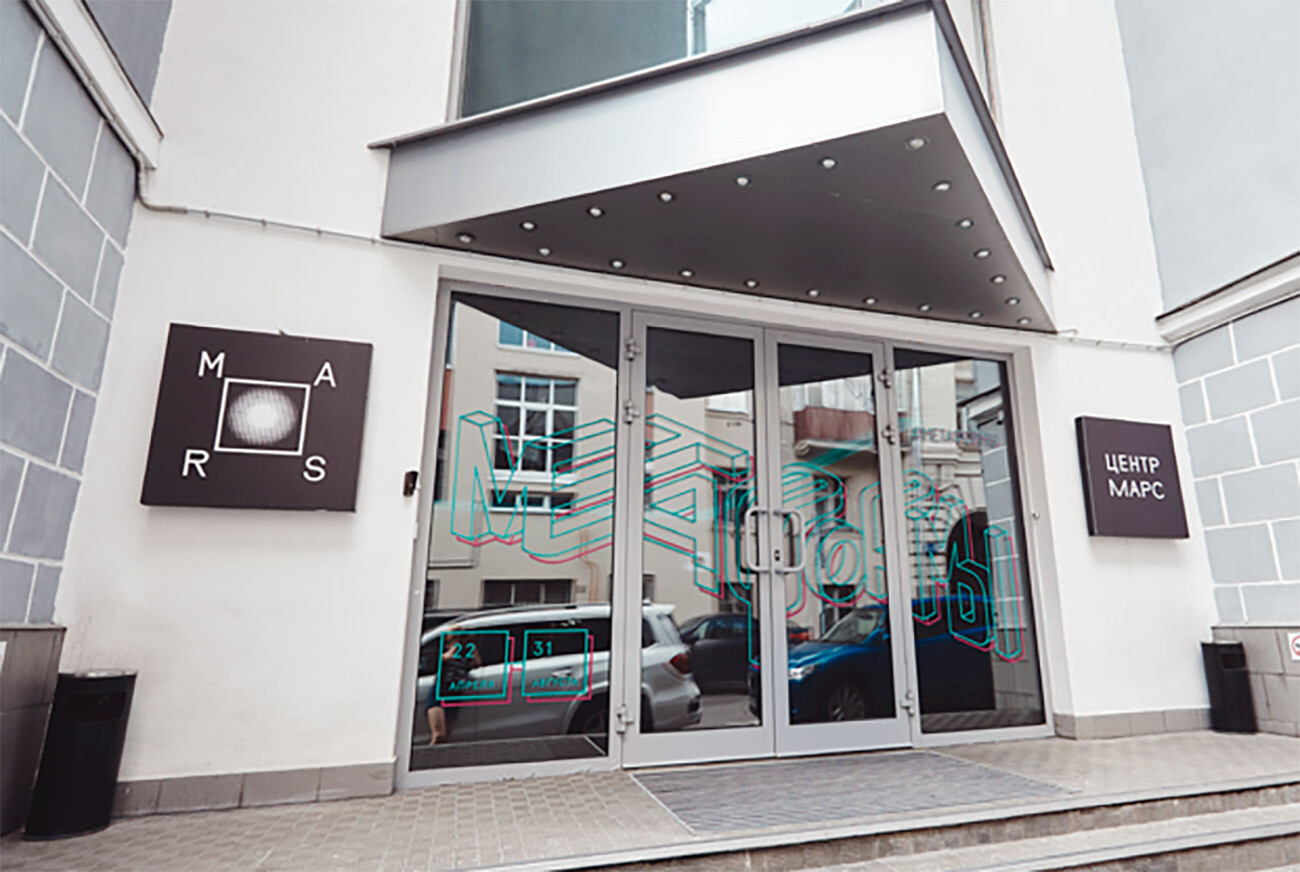
The first official private gallery actually opened in the USSR in 1988. A group of artists, including Konstantin Khudyakov and Viacheslav Koleichuk, as well as sculptors Alexander Rukavishnikov and Iulian Rukavishnikov, set up a commercial association. It performed two important functions: It introduced gallery-goers to new trends in contemporary art and provided a platform for contemporary artists. For example, it staged one of the first ‘KomMissia Comics’ festivals. Nowadays, the gallery focuses on projects involving new technologies.

‘S.ART Gallery’ opened as a new venue in Moscow in 1989. Its founder, architect and artist Pyotr Voys, initially dealt in traditionalist art, but then switched to the latest art, introducing foreign countries to Russian contemporary work (the gallery staged exhibitions in Italy, France and South Korea, among other places). One of the gallery’s most high-profile projects was centered on the Constitution: In 2003, 120 artists, including AES+F, the Blue Noses Group, Vitaly Komar and Alexander Melamid, Oleg Kulik, Dmitry Gutov and others provided illustrations for clauses of the country’s most important document.
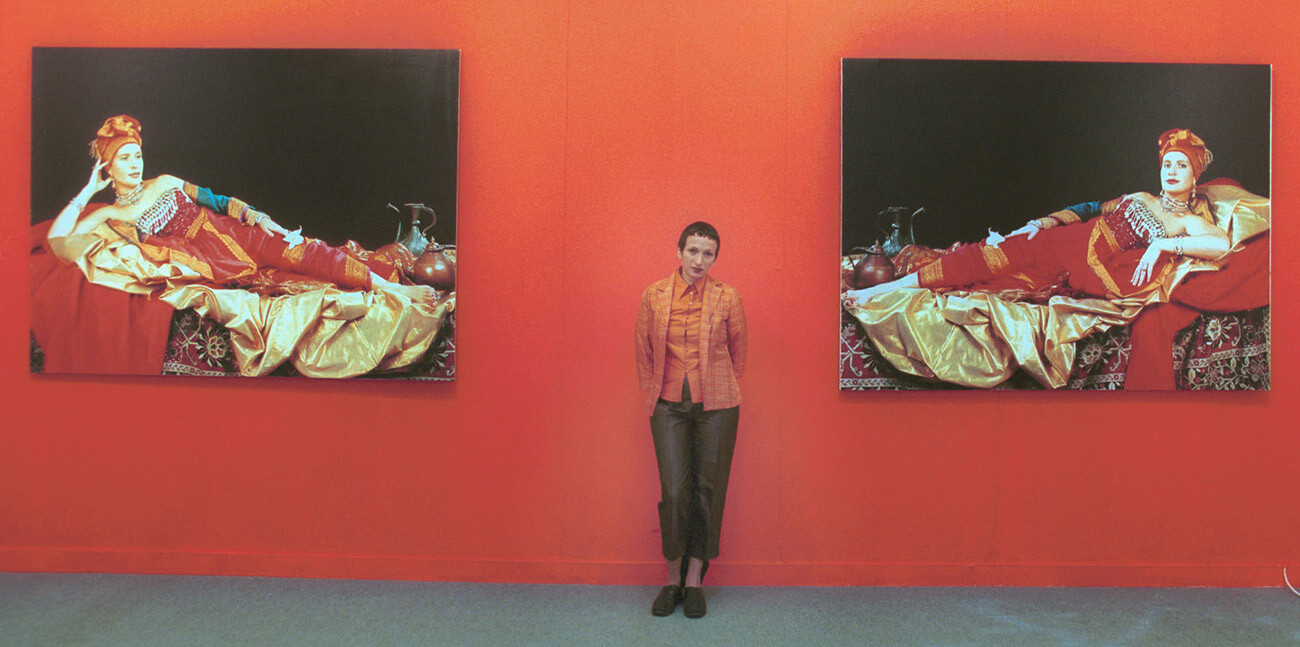
Aidan Salakhova
Viktor Velikzhanin/TASSThe gallery was in business for a very brief period, from 1989 to 1992. It was founded by artists Aidan Salakhova, Alexander Yakut and Yevgeny Mitta, who all studied together at the Surikov Art Institute. They wanted to create a space that would be different from the Soviet idea of an art gallery and where contemporary artists could exhibit their work. In the few years of its existence, the gallery staged exhibitions of Ilya Kabakov, Erik Bulatov, Helmut Newton and Francesco Clemente. And the exhibition ‘Rauschenberg to Us, We to Rauschenberg’ became an important part of the display at the USSR Pavilion at the Venice Biennale in 1990. In 1992, the founders went their separate ways: Salakhova and Yakut opened their own galleries.
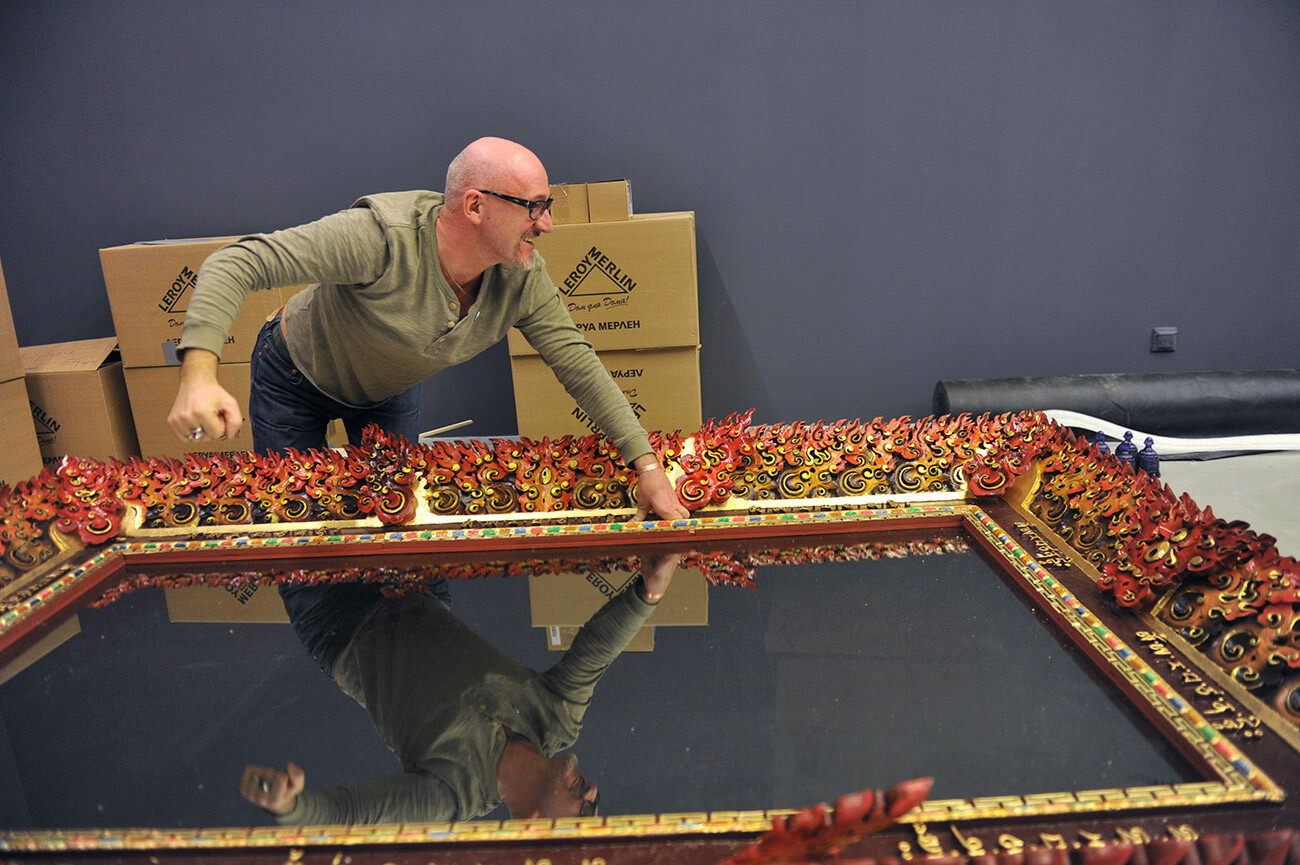
Oleg Kulik preparing a new exhibition
Artyom Zhitinev/SputnikVladimir Ovcharenko’s gallery was the first to mount exhibitions of today’s classics, such as Andrei Monastyrski, Semen Faibisovich and Ivan Chuikov. In 1990-1994, its art director was Oleg Kulik, famous for performances in which he adopted the persona of a man dog. On his watch, the gallery hosted many radical actions and performances. For instance, ‘Piglet Hands Out Gifts’ involved a pig that had been roaming around the gallery being slaughtered and immediately barbecued on skewers.
‘Regina Gallery’ was one of the first to venture beyond Russia’s borders: In 2010, it opened a branch in London and represented Russian art at international art fairs. Nowadays, the gallery operates under a different name - Ovcharenko.
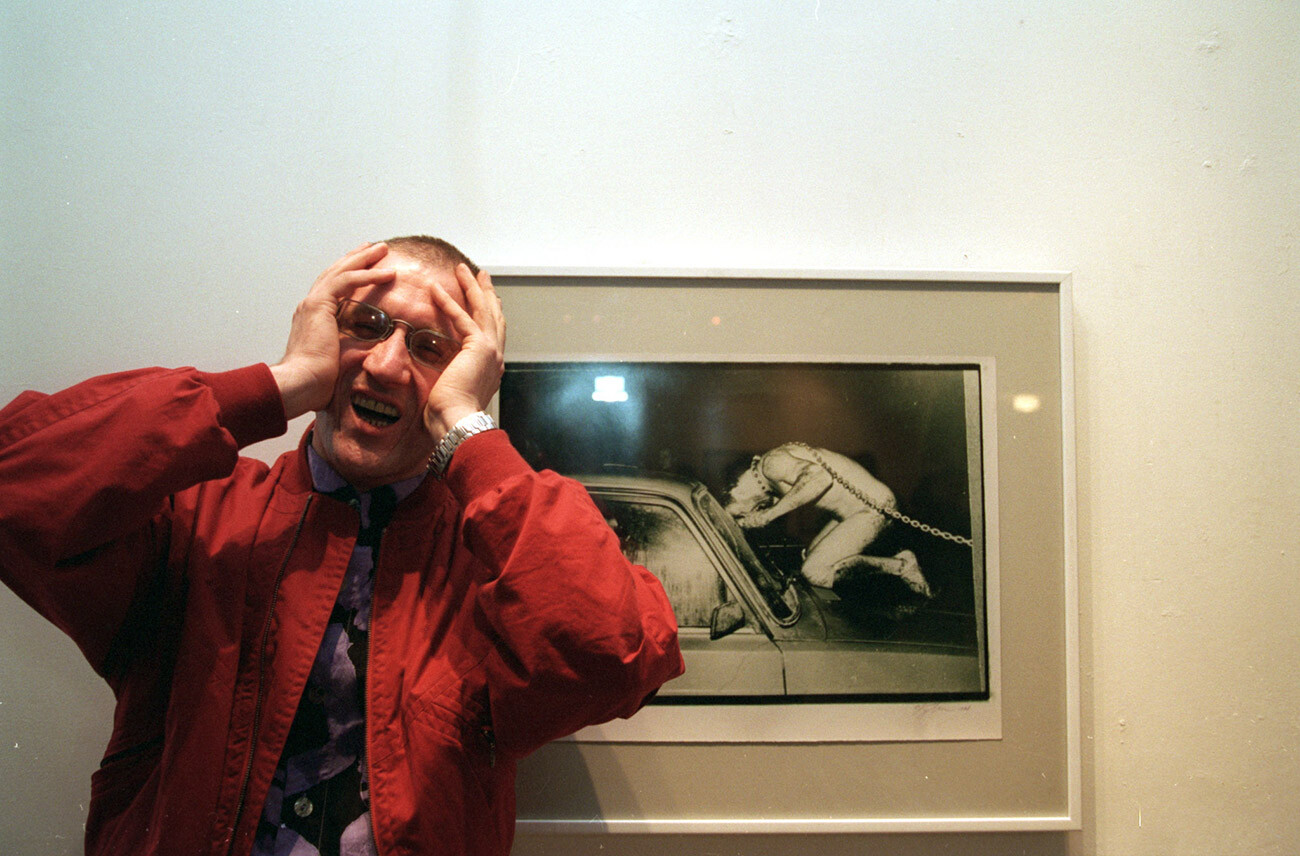
Oleg Kulik presented the exposition "Mad Dog" at Marat Gelman Gallery
Viktor Velikzhanin/TASSIt was the center of impressive and out-of-the-ordinary events for more than 20 years. Andy Warhol and Joseph Beuys exhibitions were held there in 1994. Vitaly Komar and Alexander Melamid presented their ‘People’s Choice’ project at the gallery: Employing opinion polls, the artists established what the “most wanted” and “most unwanted” paintings were in different countries and regions and these were then painted by a local artist.
Oleg Kulik’s performance ‘Mad Dog, or the Last Taboo Guarded by a Lone Cerberus’, in which the artist adopted the persona of a man dog, took place next to the gallery’s premises in November 1995. Not all art events at the gallery went smoothly. In 2006, for instance, Gelman was beaten up and a score of works by artist Alexander Dzhikiya were destroyed. In 2007, the gallery was among the first to move into the just-opened Winzavod Center for Contemporary Art and, in 2012 it closed down.
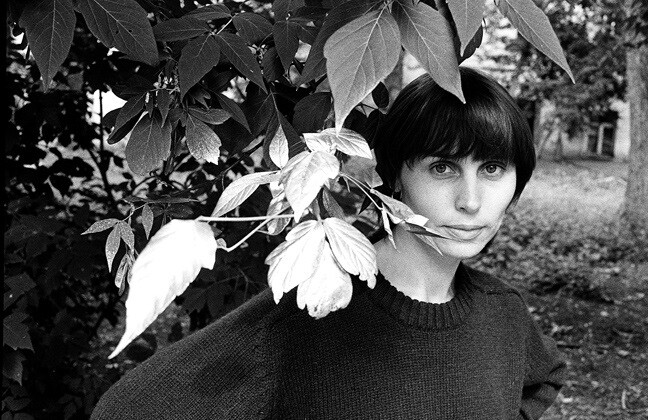
Irina Meglitskaya
Igor MukhinRussia’s first gallery devoted to contemporary photography and related fields (‘Shkola’ means ‘School’) opened in 1991. One of the first projects to be mounted in the space created by Irina Meglinskaya was ‘Replika’ (‘Rejoinder’) with works by Dziga Vertov and Alexander Rodchenko. In the several years of its existence, the gallery managed to become a vibrant landmark on the art scene. There were exhibitions of the work of Yury Babich, Vladimir Kupriyanov, Andrey Bezukladnikov, Vladislav Efimov and others.
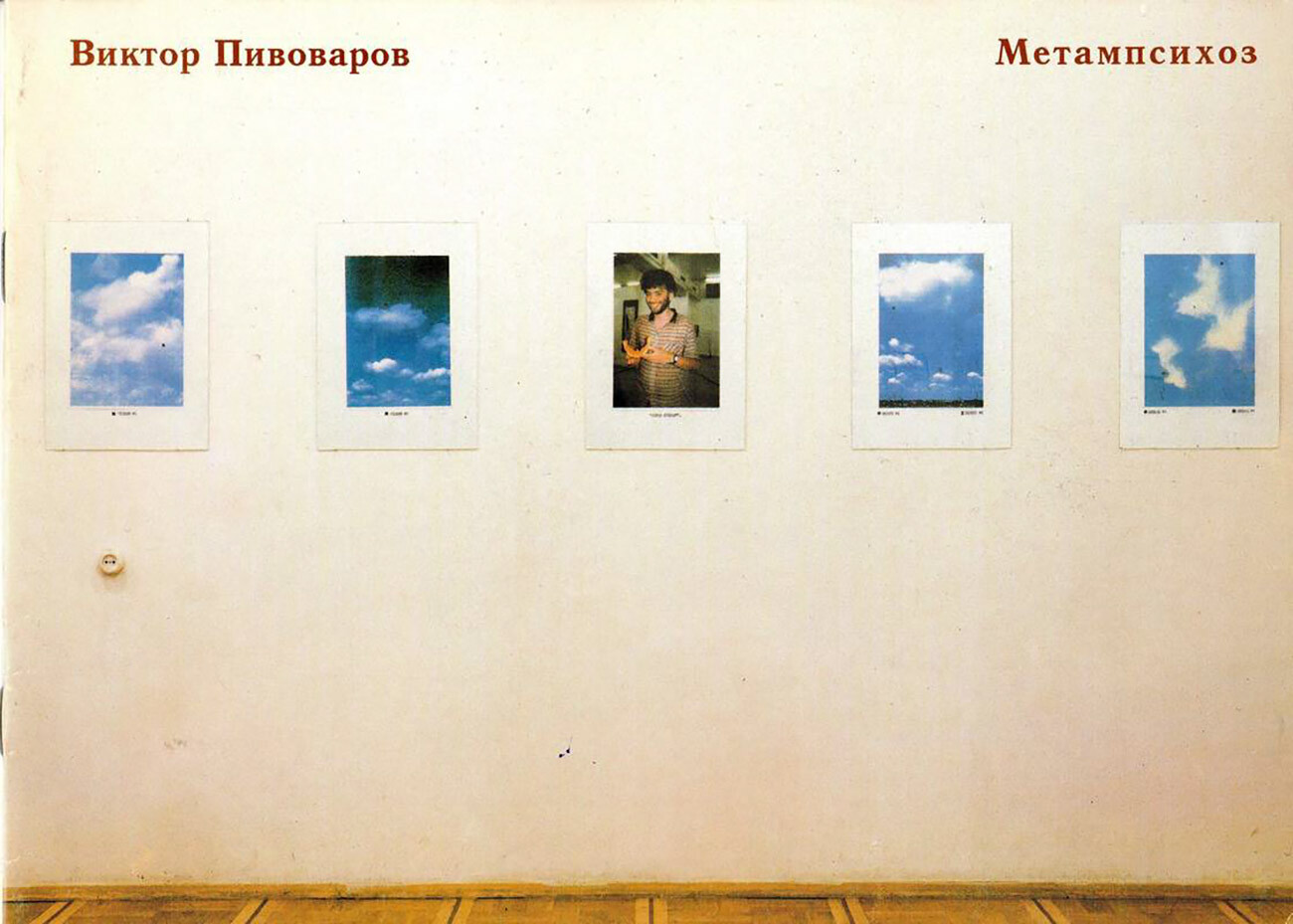
Victor Pivovarov. Metampsychosis
Garage Museum of Contemporary Art fun/L Gallery, 1993A local exhibition hall near the Novoslobodskaya subway station in Moscow was converted to a gallery in 1991. Its curators were Elena Selina and Elena Romanova. It was the venue for the work of the Moscow Conceptualists - Viktor Pivovarov, Dmitry Prigov, Victor Skersis, Andrei Filippov, Igor Makarevich and Elena Elagina. Two years later, Elena Selina along with Sergei Khripun founded what was to remain one of the leading contemporary art galleries to this day: the ‘XL Gallery’.
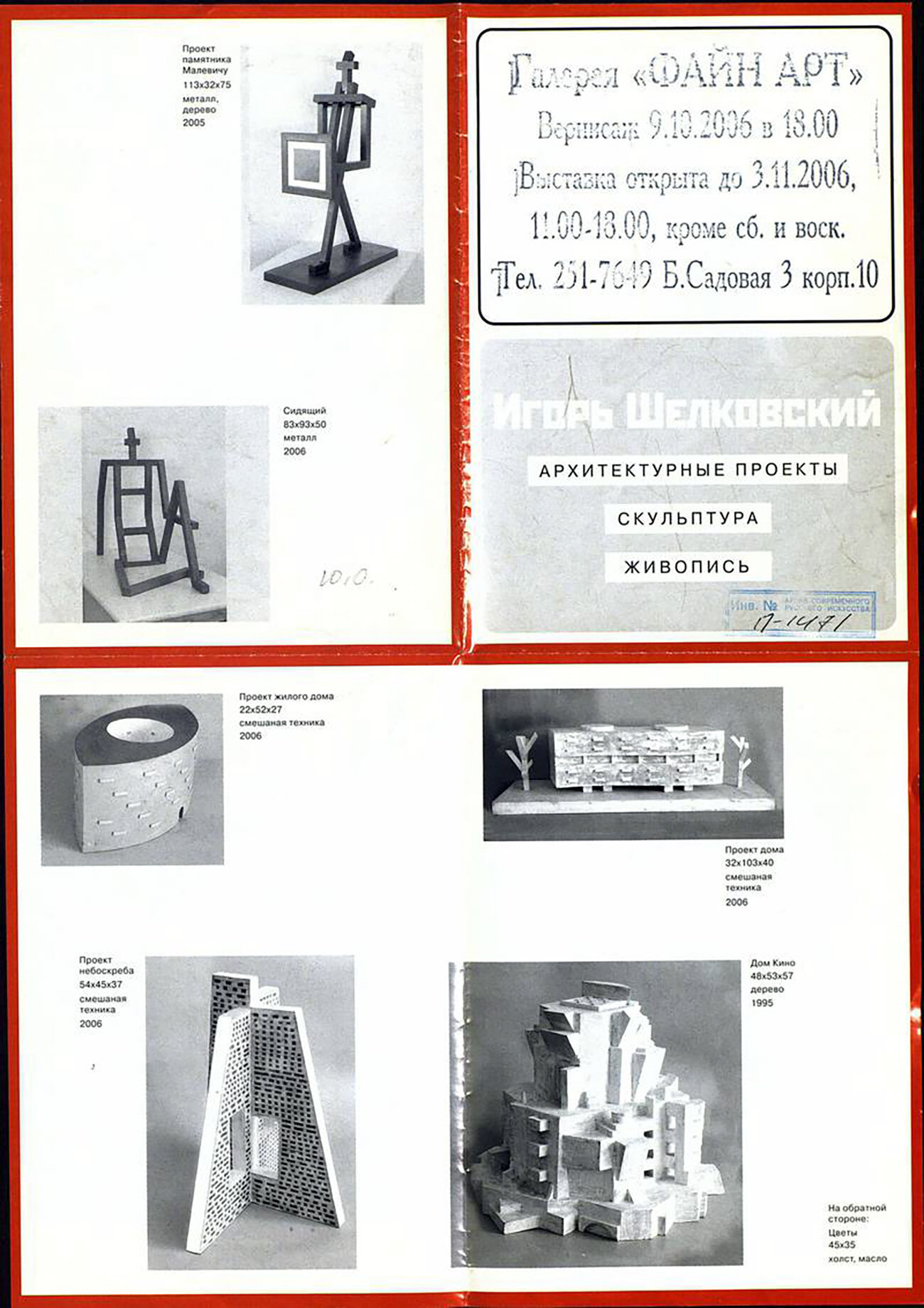
Igor Shelkovsky. Architectural projects. Sculpture. Fine art
Garage Museum of Contemporary Art fun/L Gallery, 1993From the outset, the gallery focused on traditionalist painting and graphic art. Official art was displayed here hand in hand with unofficial art, and there were exhibitions of the work of Igor Shelkovsky, Eduard Gorokhovsky, Igor Vulokh, Dmitry Shorin, and others. ‘Fine Art’ continues to operate successfully at Moscow’s Winzavod Center to this day.
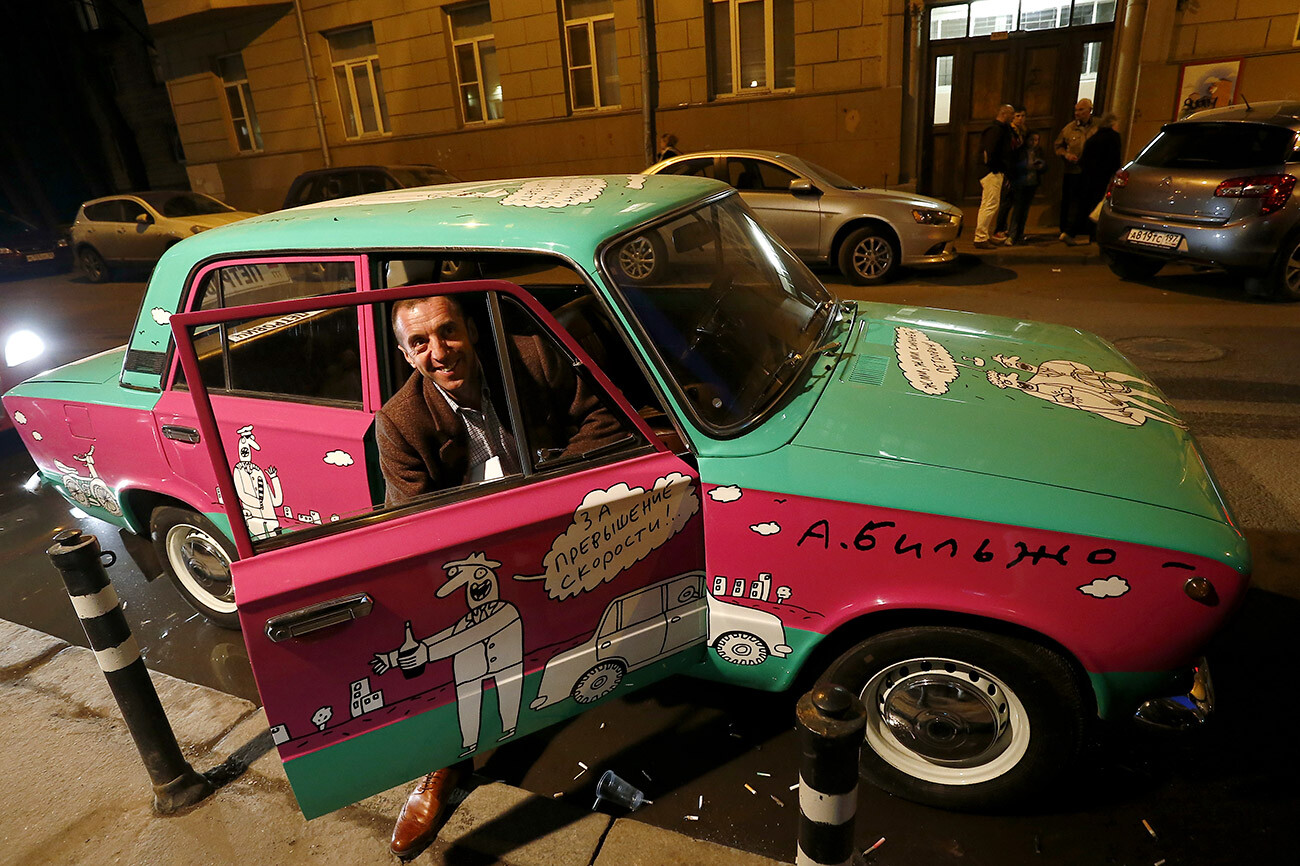
Mikhail Krokin
Valery Levitin/Sputnik“Founded in 1990. Has mounted 300 group and personal exhibitions.” The brief description on the gallery’s website abridges several decades of work in the market. This includes the first years of its existence under the name Neo-Shag and its entry into the international market: The gallery was one of the first in Russia to start participating in international fairs. It changed its name to ‘Krokin Gallery’ after the name of its founder, Mikhail Krokin. The gallery is in business to this day. Exhibitions are regularly held in its gallery space and the artists it collaborates with include Konstantin Batynkov, Francisco Infante and others.
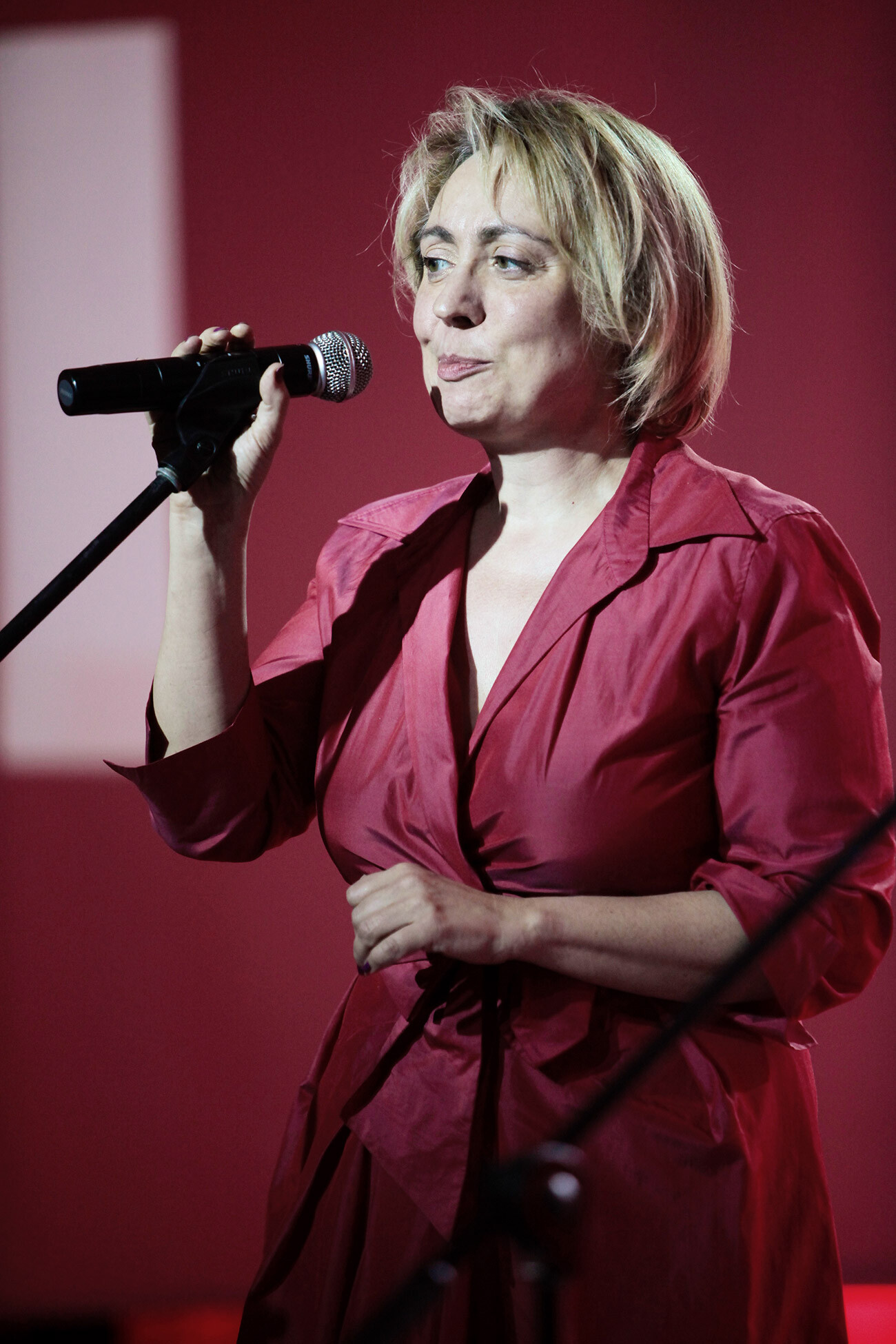
Yekaterina Dyogot
Ruslan Krivobok/SputnikVladimir Levashov and Ekaterina Degot’s venture initially lacked its own space and they held exhibitions on third-party premises. One of the gallery’s first projects was ‘Private Lessons’, which brought together the work of Yuri Albert, Dmitri Gutov, Pavel Pepperstein, Sergei Anufriev and others. Focusing on the Moscow Conceptualist School, ‘Gallery 1.0’ devoted itself to the quest for new trends in Russian contemporary art right up to its closure in 1995.
Dear readers,
Our website and social media accounts are under threat of being restricted or banned, due to the current circumstances. So, to keep up with our latest content, simply do the following:
If using any of Russia Beyond's content, partly or in full, always provide an active hyperlink to the original material.
Subscribe
to our newsletter!
Get the week's best stories straight to your inbox